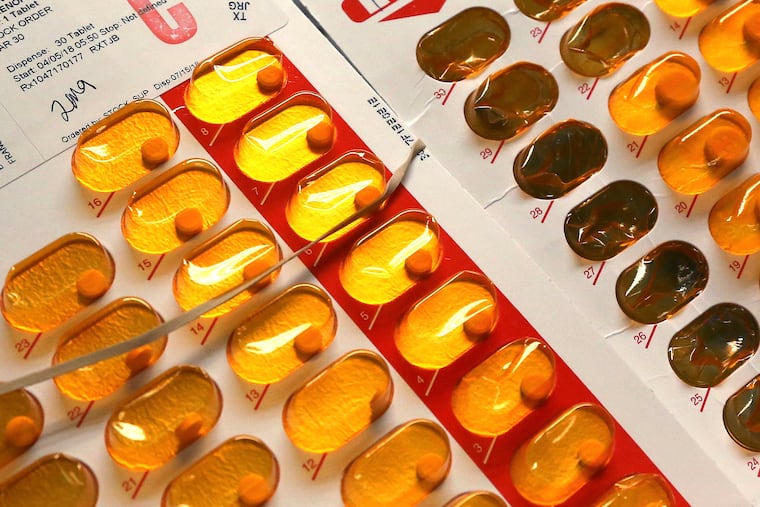What is medication-assisted opioid addiction treatment?
Recently, the federal government lifted restrictions around buprenorphine, a popular opioid addiction medication, in an effort to expand access to the treatment amid rising overdose deaths.

Recently, the federal government lifted restrictions around buprenorphine, a medication used to treat opioid addiction, in an effort to expand access amid rising overdose deaths.
Buprenorphine is one of several federally approved drugs used to treat opioid addiction, which health officials hope will be especially helpful in Philadelphia, home to one of the nation’s worst opioid addiction crises with a record 1,276 overdose deaths in 2021.
Here’s a primer on how various treatment medications work, how they differ from each other, and how to access them.
» READ MORE: The feds just removed restrictions around prescribing a popular addiction medication. What does it mean for patients?
Buprenorphine
Buprenorphine, also called “bupe” and sold under such brand names as Sublocade and Subutex, is an opioid. It can be prescribed to treat pain, but is also effective in treating opioid addiction.
For people who aren’t used to taking opioids, buprenorphine can produce a pleasurable high, and, like all opioids, it can slow a person’s breathing. But the likelihood of an overdose is much lower.
(The federal government has also approved for use a combination of buprenorphine and naloxone, the overdose-reversing drug, to decrease the potential that people would use it to get high. That combination is sold under the brand name Suboxone.)
For people who are already used to taking opioids, buprenorphine blunts painful opioid withdrawal symptoms like nausea, craving, and cramps — all of which can be factors in a relapse, which may drive someone with addiction back to more unpredictable street drugs.
Buprenorphine was subject to stringent federal regulations for years. Doctors had to obtain a special license from the Drug Enforcement Administration, and could only prescribe it to a certain number of patients. But buprenorphine could be picked up at a pharmacy and taken at home — unlike methadone, a more heavily regulated opioid medication.
Many of the regulations around buprenorphine were relaxed during the pandemic, and the licensing requirements and patient caps were officially dropped this year. Advocates for people with addiction hope that it will help more people access the drug.
Methadone
Methadone is another opioid that has long been used to treat people addicted to opioids. Like buprenorphine, its effects last longer than many opioids sold on the street, such as heroin and fentanyl, and it helps stave off withdrawal symptoms.
Some people prefer methadone to buprenorphine in part because patients who take buprenorphine before other opioids have left their system risk suffering even more severe withdrawal symptoms.
However, methadone is highly regulated by the federal government, more than any other opioid addiction treatment. Unlike buprenorphine, methadone can be provided only by clinics with special licensing.
Most patients on methadone must visit a clinic to take it under supervision every day; only patients deemed “stable” enough can take a supply home, typically two weeks to a month’s worth of doses.
Though the federal government eased some of the restrictions for take-home methadone during the pandemic, many people with addiction avoid methadone because the requirements can make it hard to keep a job, travel, or plan for emergencies.
Naltrexone
Naltrexone, sold under the brand name Vivitrol, is an opioid antagonist, meaning it blunts the effects of opioids entirely, preventing a person from experiencing a pleasurable high. Some people with opioid addiction turn to naltrexone because they don’t want to take an opioid-based medication.
But some studies have shown that it’s not as effective against preventing overdoses as other treatment drugs, such as buprenorphine and methadone.
How can you obtain medication-assisted treatment?
Philadelphia’s Department of Behavioral Health and Intellectual disAbilities has a list of hotlines to call if you have no insurance or are on Medicaid, the publicly funded health insurance program for low-income families, that can help you determine which medication or treatment service you might need.
Statewide, Pennsylvania health officials maintain a database of addiction treatment providers and a 24-hour hotline to answer questions about treatment, at 1-800-662-HELP.
New Jersey also maintains an online directory of treatment providers and a helpline at 1-844-REACHNJ.